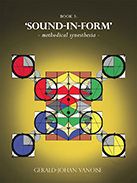
 |
A clinic on linguistics and cognition, Vanoise’s work is comprehensive and groundbreaking, a birds-eye view for readers to discern the inherent stimulation between cognition and form. In other words, the author dissects the word and deep dives into not just how it is developed using vowels and consonants but also how it is applied. As the author states, full immersion can be a daunting task for which the prerequisite is patience and open-mindedness. However, the journey is one of ultimate discovery with the word, transcending languages, and reformatting the entire thought process.
Using a steady dose of charts and diagrams, like spectrograms, Vanoise delves into complex processes like the Intuitive Method. Nevertheless, what is most refreshing is his ability to include known examples, such as the iconic and mystical Sanskrit word “Om,” to show how one can meditate upon the vocalization of sounds. Whether he is analyzing the Chinese and Japanese scripts using Confucius’ ideas or making a direct connection to the twenty-eight Arabic letters of their alphabet and humankind, the author highlights some mind-numbing correlations ranging from the association of Chinese characters with astronomy and the stars and the flow of the river to the sea in the Indian and Filipino culture.
The resonance of the word is imbued with energy, revealing the harmonious qualities that bring the vowels and consonants together, such as A, T, and K, which represent stable points in the space. Perhaps the most interesting part of the entire compilation is the introduction to such varied writing systems as ancient Brahmi. Ultimately, Vanoise challenges readers to venture into the unknown of the word using his guide map and explore its ramifications on all spectrums of life, from mathematics to behavior and religion, to enhance clarity and continue the journey of experiential learning.
RECOMMENDED by the US Review